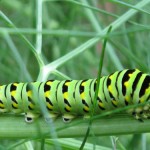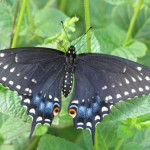Posts Tagged ‘Apiaceae’
Friday, September 7, 2012
Crithmon, some call it Critamon, is a little shrubbie herbe, thick of leaves, the height of it is about a cubit, growing in rockie and maritime places, being full of fatt, and whitish leaves, like unto those of Purcelane, yet thicker & longer & salt to ye tast.
???Dioscorides, De Materia Medica, Book II: 157
Rock samphire is one of several maritime species grown in Bonnefont herb garden. This edible plant was foraged rather than cultivated in the Middle Ages; it also had medicinal uses. Below, left to right: Samphire in bloom; the flower structure is typical of the Apiaceae, a large family of??aromatic plants. Ripening seedheads; the name “crithmon” by which the plant was known in antiquity is thought to derive from the Greek word for barley, as the seeds resemble the grain.
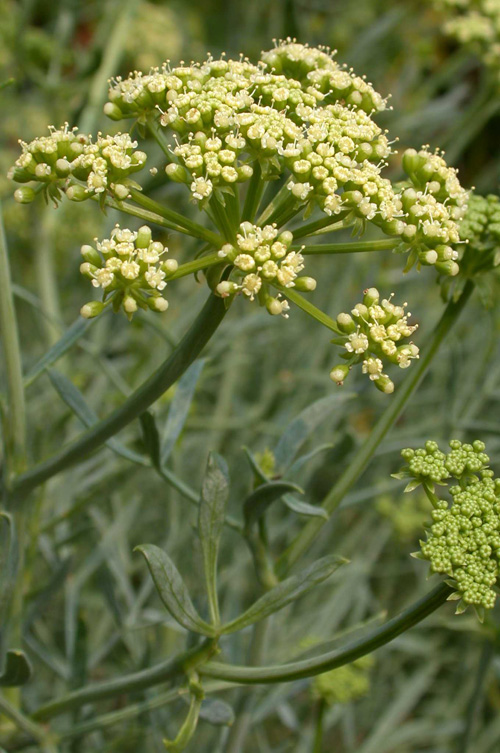
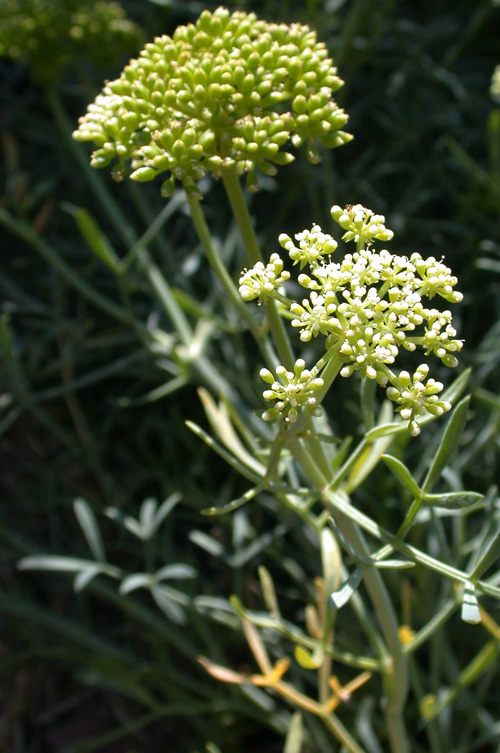
Read more »
Tags: Apiaceae, Crithmum maritimum, Dioscorides, glasswort, John Gerard, King Lear, Pliny the Elder, rock samphire, Salicornia europea, sampier
Posted in Gardening at The Cloisters, Medicinal Plants, Useful Plants | Comments (0)
Wednesday, September 15, 2010
The Black Swallowtail (Papilio polyxenes) butterfly is commonly found in fields, gardens, and open spaces in the Northeastern United States. Above, left: The body of the fully developed caterpillar with its bold, bright bands of yellow, green, and black, is conspicuous against the feathery foliage of the fennel which is its favorite food; center: a female Black Swallowtail at rest on a salvia in Cuxa garden, as seen from above; right: the same butterfly seen in profile with its wings folded upward. Photographs by Corey Eilhardt.
We found several large, boldly marked caterpillars feeding on a stand of fennel (Foeniculum vulgare) in Bonnefont garden last month. We left them undisturbed, knowing from past experience that they would grow up to be beautiful eastern Black Swallowtail butterflies. Read more »
Tags: Apiaceae, Black Swallowtail, caterpillar, Fennel, Foeniculum vulgare, furanocoumarins, osmeterium, Papilio polyxenes, photodermatitis, phytotoxins, Ruta graveolens
Posted in Gardening at The Cloisters | Comments (1)
Thursday, October 2, 2008

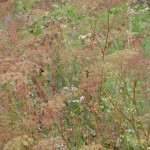
Left: Anise (Pimpinella anisum) in flower, Bonnefont Herb Garden; right: Anise (Pimpinella anisum) in seed, Bonnefont Herb Garden.
Representatives of the Apiaceae family are scattered throughout all of the gardens at The Cloisters, but they are most prominent in the culinary beds of Bonnefont Herb Garden. These plants are greatly exploited for their distinct fragrances and tastes. The essential oils, created from a fairly large group of chemical constituents within the plants, are responsible for the incredibly flavorful and aromatic properties of this family. In addition, these properties help to ensure the survival of plants in this family by attracting pollinators to the flowers. Read more »
Tags: Apiaceae, Culinary Herbs, Fennel, Fragrant Herbs, herb
Posted in Botany for Gardeners, Food and Beverage Plants, Fragrant Plants | Comments (5)



